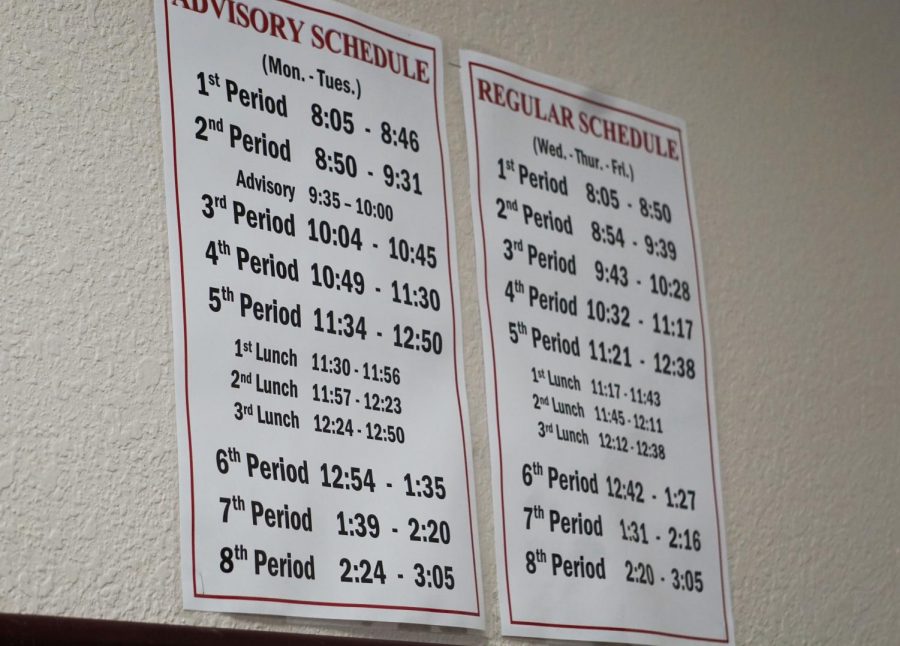Why a Two-Day Advisory?
September 5, 2019
Any changing of schedule can often be terrifying for the students of Great Bend High School, and the 2019-2020 school year’s change to the advisory period is no exception. During the 2018-2019 school year, the advisory period was a daily 30-minute class dedicated to giving students a chance to talk to their advisory teachers and build their character with a special lesson on Friday. Students often used the class as extra time to work on homework or other assignments, but it was just as common for the time to be used to fool around or just do nothing. The frequency of students doing nothing during that time, coupled with the goal of increasing the graduation rate of Great Bend High School, prompted the idea for a new schedule to be used in the 2019-2020 school year.
So what changes with the new schedule?
The updated schedule changes the advisory period from a daily class to one only taking place on Monday and Tuesday. Advisory’s main intention is for it to be used for grade tracking, character building, and career building, with the decreased amount of advisory periods leaving little time to work on other assignments. The schedule also has ramifications beyond just the advisory period: Absent from the new school year’s schedule are late starts, days where school started an hour later on every other Wednesday. There are positives to the changed schedule: thanks to the added time for other classes, the schedule also increases the number of non-advisory classes to eight from last year’s seven.
What do students think?
Despite the short amount of time students have been given to experience the changes, many have developed their own feelings towards the schedule. One student who was interviewed said that he preferred last year’s schedule, simply because “we need our late starts back.” Another said that they “liked the advisory every day,” and that they “only didn’t like it because they switched my advisory class, and they took away late start.” Alongside those who view the change negatively, there are students who favor the new schedule, as well. When asked whether the new schedule was better than the old schedule, one student said “Yes, because even though we all loved advisory, a lot of us loved it just to screw around, honestly.” They continued by listing the benefits of the change: “This schedule gives more electives, more college stuff… I think it’s better.”
The administration says:
However, Mr. Friess thinks that the new schedule is ultimately an improvement for Great Bend High School. When asked about how he would alleviate concerns over the schedule, he said that the new schedule wasn’t “change for the sake of change.” He continued with the idea that advisory classes have been like families, but that “since we were changing [the schedule], it was a good time to change the classes as well.” Mr. Friess recalled when he was a young student, and sympathized with those who missed the late start days and disliked the changing of advisory classes, but repeated that he and the administration weren’t changing things for the sake of change.
Ultimately, the schedule change creates more opportunities for students to earn high school credits, which the district hopes will, in turn, increase the graduation rate. As a side effect of having the new schedule, there is less time for students to complete homework using their time in school, but also less time for students to spend messing around. With the added amount of classes per day in the new schedule, alongside the new lack of school time that can be dedicated to homework, students will feel increased pressure to do well during the school year. No matter how the students, parents, or staff feel about the new schedule, it seems they will either have to adapt to the new or be left behind with the old.



